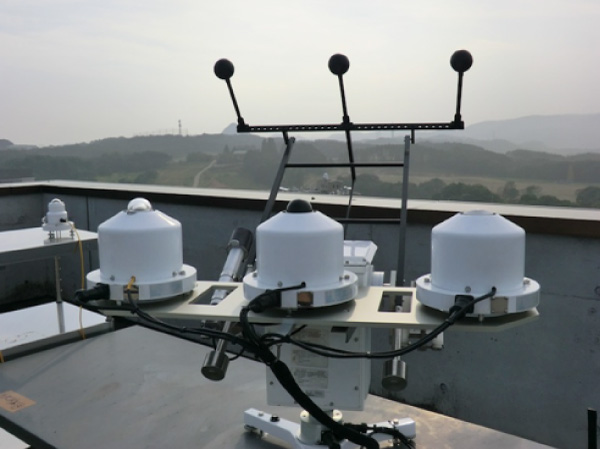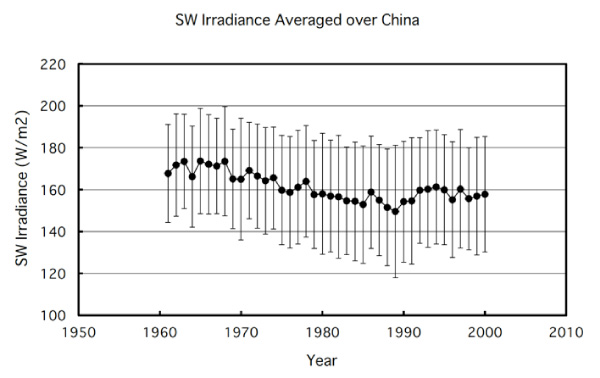Topics 2016.06.07
Long-term variation of surface shortwave radiation
Fig.1 Pyranometers (left and center) and a longwave radiaometer(right).
The energy in the atmosphere-surface system of the Earth is provided by shortwave radiation from the sun. The received energy is emitted to the space by longwave radiation. Accordingly, the energy budget of the earth's surface is balanced for one year, and the climate of the whole Earth appears to be stable. The spatiotemporal variation of received surface shortwave radiation produces wind, clouds, and precipitation.
The surface shortwave radiation has been observed at meteorological observatories in the world since late 1950s, taking opportunity of IGY (International Geophysical Year) in 1957~1958. It was pointed out from the observations that the surface shortwave radiation had decreased until 1980s by several percent in the world. Since then, the radiation changed to increase in Europe, North America, and Japan. In China, on the other hand, it decreased until around 1990 and changed to increase, and again changed to decrease around 2000. In India, the surface shortwave radiation has been decreasing until now.
Among the causes to produce long-term variation of surface shortwave radiation, anthropogenic aerosols are considered to be dominant through various mechanisms. For example, the surface shortwave radiation decreases with an increase in aerosol loading in the atmosphere because of the scattering effect of aerosol. On the other hand, aerosols affect the cloud radiative properties such as reflectivity due to an increase in cloud condensation nuclei, cloud particle concentration, and cloud particle size. It also affects the lifetime of cloud and cloud amount.
It has been suggested from recent studies that the effect of aerosol on the surface shortwave radiation is different among the regions. In China, cloud amount also decreased for the same period of decrease in the surface shortwave radiation. It is inconsistent because a decrease in cloud amount generally contributes to an increase in the surface shortwave radiation. However, heavy loading of aerosol compensates a decrease in cloud amount for the surface shortwave radiation. Strong light absorption aerosols such as black carbon in the sub-cloud layer cause a decrease in surface shortwave radiation even under the overcast sky condition. It is reported that long-term variation of the surface shortwave radiation is observed in the pristine regions. In these regions, the surface shortwave radiation varied due to cloud property changes caused by condensation nuclei change.
The relationship among the surface shortwave radiation, aerosol and cloud is complicated. Aerosols with weak light absorption property do not affect the surface shortwave radiation under the thick cloud condition. Activities of aerosol as cloud condensation nuclei depend on the size distribution, chemical components, and mixture status of aerosols. Therefore, quantitative evaluation of aerosol effect on the surface shortwave radiation is difficult, and further studies are needed in the future.
Fig.2 The long-term variation of surface shortwave radiation observed in China.
(Prof.Tadahiro Hayasaka, Center for Atmospheric and Oceanic Studies)


